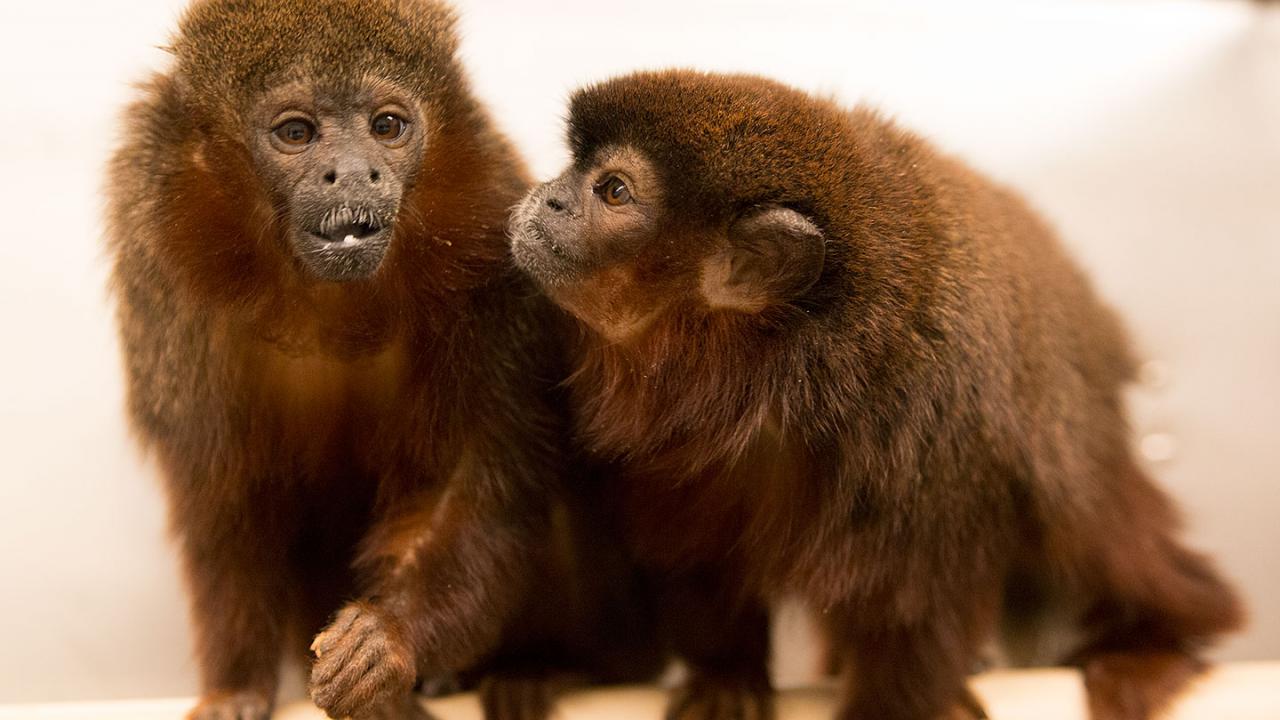It’s perhaps one of the most common emotions to feel in a relationship, but one that’s virtually untouched when it comes to studying relationships in monogamous primate species. What scientists have recently discovered about jealousy in pair-bonded titi monkeys at the California National Primate Research Center at the University of California, Davis, offers insight into human emotions and their consequences.
Coppery titi monkeys are among the 3 to 5 percent of mammals that form lifelong, monogamous pair bonds. Much like humans, the titi monkeys form an attachment with their partner, exhibit mate-guarding behavior and become distressed when they are separated from each other.
“They have behavior and emotions that we recognize as close to how we feel,” said Karen Bales, professor of psychology at UC Davis and a core scientist at the CNPRC. Bales conducted the study with postdoctoral researcher Nicole Maninger and colleagues. “The idea behind all of this is we have to first understand the way that the neurobiology of social bonding works normally before we can understand what happens in situations where social bonding, social behavior or social communication is impaired. For instance, in disorders like autism or schizophrenia.”
Bales and her colleagues simulated a “jealousy condition” in male monkeys by separating them from their pair-bonded female partners. The females were placed with a stranger male monkey in full view of their partner while the researchers filmed the behavior of the male partner for 30 minutes.
When a titi monkey is feeling jealous it typically arches its back, lashing its tail back and forth and is generally more emotionally aroused, Bales said. Male titi monkeys have also been known to physically hold their partner back from interacting with another male. While female titi monkeys exhibit jealous behaviors much like their male counterparts, they do so in a less intense manner, making male titi monkeys ideal for the study, Bales said.
Hormonal changes and brain activity
The monkeys exhibited hormonal changes, specifically a rise in testosterone and cortisol levels. The rise of cortisol is an indication of social stress, and in this study, it correlated directly with the amount of time that the male monkeys watched their partners with the stranger male. The rise of testosterone is associated with mating-related aggression and competition, Bales said.
Brain scans performed on the monkeys revealed heightened activity in the cingulate cortex, an area of the brain that is associated with social exclusion in humans. The researchers also noticed heightened activity in the lateral septum, an area of the brain that has been associated with aggressive behavior. The jealousy exhibited by the male monkeys, however, is not necessarily entirely negative.
“Trying to keep your mate away from your opponent is evolutionarily geared toward preserving the relationship,” Bales said.
The results of the study give important clues that we can use to approach health and welfare problems such as addiction, autism and domestic violence, Bales said.
Additional authors on the study, published in the journal Frontiers in Ecology and Evolution, are: Sally Mendoza, Donald Williams and William Mason, UC Davis Department of Psychology; Simon Cherry, UC Davis Department of Biomedical Engineering and Center for Molecular and Genomic Imaging; Douglas Rowland, Center for Molecular and Genomic Imaging; and Thomas Schaefer, CNPRC. The work was supported by grants from the NIH and the Good Nature Institute.
Media Resources
Carlos Villatoro, California National Primate Research Center, 530-754 4413, cvillatoro@ucdavis.edu
Andy Fell, UC Davis News and Media Relations, 530-752-4533, ahfell@ucdavis.edu
Karen Bales, Psychology, klbales@ucdavis.edu
